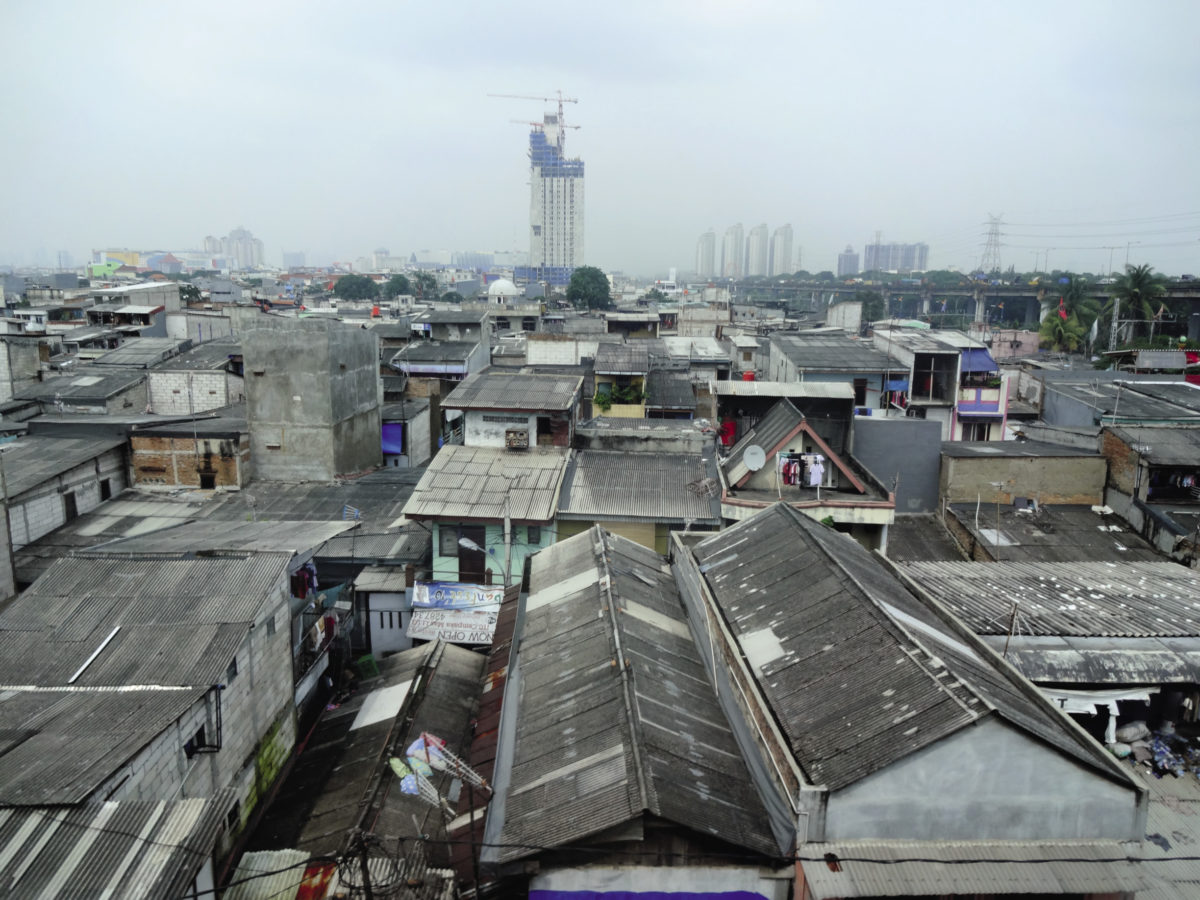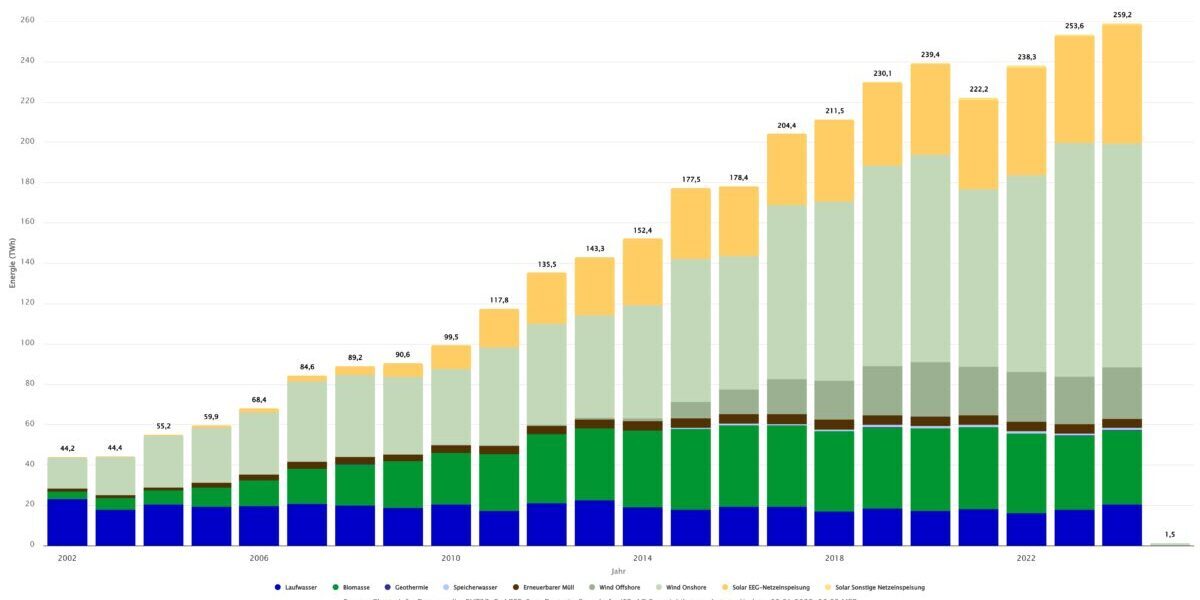From pv magazine, October edition
In August, the IESR drew up four assessments of Indonesia’s rooftop solar potential, based on variables such as roof pitch, shading orientation and local climate conditions. The lowest estimate in the studies was that 194 GW of rooftop capacity could be installed, which – if actually built – would generate almost 276 TWh of solar power per year. More optimistic scenarios see capacity potentially reaching anywhere from 267 GW to 462 GW. The most optimistic scenario is 655 GW, which would be equal to an astonishing 931 TWh of power output.
The provinces with the highest technical potential are East Java, West Java, Central Java, North Sumatra, Banten, Jakarta, Lampung, South Sulawesi, South Sumatra and Riau. Three provinces on the island of Java have the highest technical potential, based on the number of households that could be producer-consumers.
Two big cities, Surabaya and Jakarta, show strong market potential and could help state utility Perusahaan Listrik Negara (PLN) meet rising electricity demand. The studies on these two large cities examined the availability of rooftop space in detail. And pressing air quality concerns in these cities make the case for rooftop PV particularly compelling.
Greater Jakarta and Surabaya
Jakarta has a technical rooftop PV potential of up to 22 MW on its state government buildings, ministerial buildings, state hospitals, universities and big shopping centers. The capital, along with nearby cities such as Bogor, Depok, Tangerang and Bekasi, have 570,000 to 630,000 households with at least 45m2 of surface area available for rooftop arrays. With each household installing just 2 kW, the result would be around 1.2 GW of aggregate capacity.
University and school buildings, commercial buildings, government buildings and hospitals in Surabaya offer around 35.5 MW of potential. There is greater rooftop PV potential in Surabaya than in Jakarta, because HVAC (heating, ventilation and air conditioning) systems decrease the availability of rooftop space to install solar in the capital. Surabaya, with 85,000 to 93,000 45m2 of suitable homes, could generate up to 186 MW, based on 2 kW residential system sizes.
How these homes can be incentivized to install solar is another matter. In a variation on net metering, based on current Ministry of Energy and Mineral Resources (MEMR) regulations, each kilowatt-hour exported to the grid is credited with the equivalent of 0.65 units of PLN electricity.
This pushes payback periods for residential rooftop PV systems in Jakarta and Surabaya beyond 10 years. “Our market survey showed that customers demand a significant power bill reduction of more than 50% … from the current net-metering scheme this number would be hard to achieve,” said Marlistya Citraningrum, program manager of IESR. “These [current net metering] schemes create a 12-year payback period for solar PV installments.”
One million…
To support Indonesia’s ambitious target for 23% renewables by 2025, it established the “One Million Rooftop Solar” (Gerakan Nasional Sejuta Surya Atap, GNSSA) movement in 2017. The initiative aims to install 1 GW solar rooftop electricity capacity by 2020 by speeding up rooftop PV deployment in households, public facilities, commercial buildings, government buildings and industrial complexes.
Two years after its launch, “One Million” seems a million miles away. “In July 2017, we recorded around 200 users of solar rooftop in Jakarta. Up to 2019 the development just reached around 600 users,” explained Andhika Prastawa, head of the country’s top PV industry organization, the Asosiasi Energi Surya Indonesia (AESI).
“On average, each year the development is just 200 buildings or households that use solar panels. [It has] not yet developed as we all wished … The three main problems are licensing procedures, parallel charges for PV in the industrial segment, and net metering for household users.”
In terms of licensing, the previous system obliged solar rooftop installations starting with a capacity of 25 kVA to obtain certification (Sertifikat Laik Operasi, SLO). Starting from 200 kVA, a license to operate was required.
This regulation is a massive burden on small-capacity rooftop solar PV installations and it brought relatively high costs. Complicating matters further, the certification is provided by institutions that are not evenly distributed across Indonesia.
However, things are now moving in the right direction. On Sept. 6, the Indonesian er 500 kVA do not need certification or licenses to operate. Now, a simple assessment of installation safety standards will be sufficient.
Domestic content
Another barrier to solar deployment has been domestic content requirements. A 60% local content level has been legislated for rooftop arrays. “So far, we could accomplish just about 40%, as factories are not yet ready to produce the local components,” explained Andhika. He said that at present, solar cells have to be imported and that AESI is urging the ministry to delay the enforcement of this regulation.
“We encourage the government and the private sector to collaborate in this industry, so the upstream business can grow more, and the industrial ministry agreed to postpone the enforcement.”
(Not) net metering
The unfavorable net metering regime in place for state utility PLN is also holding back solar development. Previously a genuine 1:1 regime was in place for solar feed in, but in 2018 this was changed to the 1 – 0.65 system.
PLN had lobbied for the change, argues AESI, but the impact of even one million solar rooftop arrays would have been limited. If the one million rooftop solar panel movement (GNSSA) achieved its goal in 2020, PLN would lose only a total of 0.42% of its total electricity revenue. Merely small change for a big company, but enough to push back against – it seems.
“Regarding the net metering scheme, it has not yet changed from our last discussion with the ministries involved. The government focuses more on the industrial sector with its significant impact. The industrial sector rooftops can reach a capacity of at least 100 kW, but for home installation, it probably just reaches 1 to 5 kWh,” stated Andhika.
If commercial players want to install big capacity rooftop power and connect it to the PLN grid, they are subject to additional charges, some of which are calculated by tortuous means. The charges consist of a connection cost, capacity cost and power purchase cost (normal and emergency costs).
The capacity cost is calculated by the total net power generated, multiplied by 40 hours and multiplied again with applicable electricity rates. This calculation is a burden to the industries in implementing rooftop solar power.
“It is not proportional, especially as PV … does not operate for 24 hours, and 40 hours are too much. We foster communication with involved ministries, and they agree to reduce the number of hours to five,” said Andhika.
Possible solutions
The government could encourage the growth of PV by installing solar on government buildings and public facilities. This August, the Jakarta city government released regulations regarding the control of air quality. Since June, a public discussion has been underway in the capital, which has a population of 9.6 million, about its poor air quality. Jakarta is currently considered one of the most polluted cities in the world.
New regulations have been introduced in an attempt to improve the air quality in Jakarta – taking a multilayered approach. Boosting the installation of rooftop solar panels on schools, government buildings and state hospitals is a part of the government’s agenda to this end. The Ministry of Energy and Natural Resources has stated on its official pages that the Jakarta government’s target is to install up to 2 GW of solar rooftop capacity by 2022.
IESR welcomes these new initiatives and recommends that the Jakarta government also provides subsidies and discounts on land and building taxes for households to install rooftop PV panels. Such incentives could enhance the affordability of solar PV in the city and improve its return on investment for building owners.
“The perception of high-cost solar rooftop leaves the building owners longing for funding schemes in the form of installments with periods of at least five years and with other government incentives that could lower upfront costs, including a guarantee of product quality,” explained the IESR in a press statement.
“It is hard for the government to implement a 1:1 ratio, but installment packages or proper funding from the government could help to ease the [required] investment. Another way is to collect funding for green initiatives, as implemented in the EU to reduce the investment costs,” explained Andhika.
Contributions of public bodies could help the country hit its ambitious target of adding 6.5 GW of solar generation capacity throughout the country by 2025. The general planning brought by presidential decree 22/2017 mandates that solar panels should be installed on 30% of all government buildings. Other provinces such as Bali, Central Java and North Sumatra will also follow Jakarta’s plan to encourage rooftop PV installation through local regulations.
The electricity supply business plan 2019-2028, released by the Ministry of Energy and Natural Resources, wants renewable energy to account for 23.2% of the country’s energy mix. To meet this goal, rooftop solar will have to be increased to around 3.2 GW. This target requires around 1.6 million users, each with 2 kW rooftop arrays.
By Sorta Caroline
This content is protected by copyright and may not be reused. If you want to cooperate with us and would like to reuse some of our content, please contact: editors@pv-magazine.com.



2 comments
By submitting this form you agree to pv magazine using your data for the purposes of publishing your comment.
Your personal data will only be disclosed or otherwise transmitted to third parties for the purposes of spam filtering or if this is necessary for technical maintenance of the website. Any other transfer to third parties will not take place unless this is justified on the basis of applicable data protection regulations or if pv magazine is legally obliged to do so.
You may revoke this consent at any time with effect for the future, in which case your personal data will be deleted immediately. Otherwise, your data will be deleted if pv magazine has processed your request or the purpose of data storage is fulfilled.
Further information on data privacy can be found in our Data Protection Policy.